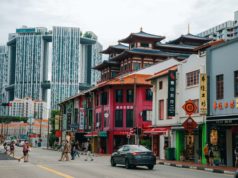(These native carabaos, kept in a sanctuary in the Calayan Island in the north, are made certain that their bloodlines will not be mixed with those of the riverine-type which is now used for upgrading the local breed to become dairy-type. Photo by Elmo Roque)
SCIENCE CITY OF MUÑOZ – Amid fears of not a few animal experts, the bloodline of the native carabaos will not be lost even as the frenzy to re-engineer the native animal to become dairy type heightens, officials of the Philippine Carabao Center (PCC) here said.
“There are parallel efforts to conserve and use the native carabaos,” said PCC executive director Dr. Arnel del Barrio.
The conservation efforts, he said, can be readily appreciated through the established in-situ (on site) gene pool of native carabaos. It is at the PCC station at the Cagayan State University (PCC at CSU) in Peñablanca town in Cagayan.
“It has been designated as the national sanctuary of quality native carabaos,” Del Barrio said. Aside from this, he added, a herd of quality native carabaos is pooled at the Ubay Stock Farm in Bohol for the propagation of their bloodline.
Dr. Annabelle S. Sarabia, PCC chief of operations, on the other hand, said that as part of the PCC efforts on the preservation of the breed of native carabaos, cryopreservation is being carried out by the agency.
Presently, many farmers are opting to have purebred as well as crossbred dairy buffalos. This is understandable as the milking-type carabaos provide big daily income for 10 months for the farmers.
Some purebred and crossbred buffalos owned by the farmers yield as high as 14 liters of milk a day. At the prevailing ex-farm price of P50 per liter, it is a lot of money for the farmers who usually see the color of money only when they harvest their crops after several months working and waiting.
Village-based technicians, as well as government extension workers, go around the villages to reach their target of inseminating thousands of breedable native carabaos with the semen of the dairy buffalos to produce crossbreds. The doses of semen are from purebred riverine buffalos extracted and processed at the PCC’s national bull farm in Carranglan, Nueva Ecija which are distributed nationwide.
It is for this reason that many animal experts feared that the attention to the breed of the native carabaos may wane and eventually cause detrimental effects to the population of this native animal.
Many farmers, however, still love to own native carabaos. They use them for their draft power especially for farm works that the machines cannot tackle well. Like doing “dukit” or plowing the rice land near the levees, for “karyada” of hauling of the harvest in fields mired in muds, and even for milking, too.
Conservation, traits improvement
Facts gathered from PCC showed that there exist big efforts to conserve the native carabaos to continue their bloodline.
In Peñablanca, Cagayan, about a hundred native carabaos, majority of which are females, are lodged in a secured area for conservation.
“We have individual records for these animals,” Rubina Piñera, training specialist III of the PCC at Cagayan State University, said. “Their records are in a data base here and at the Genetic Improvement Program (GIP) office in our PCC headquarters.”
The growth rate and reproductive performance of each of the native carabaos are monitored and recorded, she added.
The best of the bulls in the herd are sent to the PCC National Bull Farm in Carranglan, Nueva Ecija as semen donors. “Whenever we need frozen semen for the AI service of the breedable native carabaos, we get it from the bull farm,” she added.
Also in the Calayan Island, about 39 kilometers west-southwest off the north coast belonging to the Babuyan Island group in the north, no other breeds of water buff aloes, except the native ones, are kept in a 50-hectare communal facility put up by the local government entity. The PCC is assisting the farmers for further improvement of the breed of their carabaos.
The farmers in nine barangays in Calayan Island committed to provide the conservation facility with the selected best native carabao bulls from their respective herds. The island has been declared as a native carabao sanctuary.
There are also other efforts from various sectors to conserve the native carabaos.
In Barangay Uyoy, Mahatao, Batanes, about 116 hectares, which is part of the place called “Marlboro Country,” are devoted for the raising and use of native carabaos. Members of the association in the area who own an average of six carabaos each are given specific areas to tend their animals.
They pay P60 per head annually, on top of their payment of P500 as lifetime member of the association. The amounts collected are used for the upkeep of the area and for the needed support for improvements.
“We bought breeder carabao bulls which we loaned out to the association to improve the genetic quality of their native carabaos,” said provincial veterinarian Alberto Tabile.
In the island-town of Pres. Carlos P. Garcia (CPG) in Bohol, it is a “no-no” to bring in live carabaos or frozen semen of riverine buffalos. Numbering about 300, some of the native carabaos in the island bulk to more than 500 kilograms each.
The town’s ordinance prohibits the slaughtering of the female carabaos to preserve the local breed.
“It is fitting to dedicate our town for the conservation of the native carabao. After all, it is named after former President Carlos P. Garcia, the chief executive who popularized the “Filipino First Policy” – that of “preferring, conserving and cherishing what the nation owns”.
Cryopreserved
As part of the conservation efforts, PCC has cryopreserved the genes of many quality Philippine carabao.
As defined, cryopreservation, is a process wherein cells, whole tissues, or any other substances susceptible to damage caused by chemical reactivity or time are preserved by cooling to sub-zero temperatures.
Started in 2012, it is done by subjecting germplasms or biological samples (which include semen, oocytes, embryos, blood and somatic cells) to minus 196 degrees Celsius for the boiling point of liquid nitrogen.
“We only cryobank the germplasms of the native carabaos with high genetic merit,” said Lilian Villamor, head of the PCC cryobanking facility.





